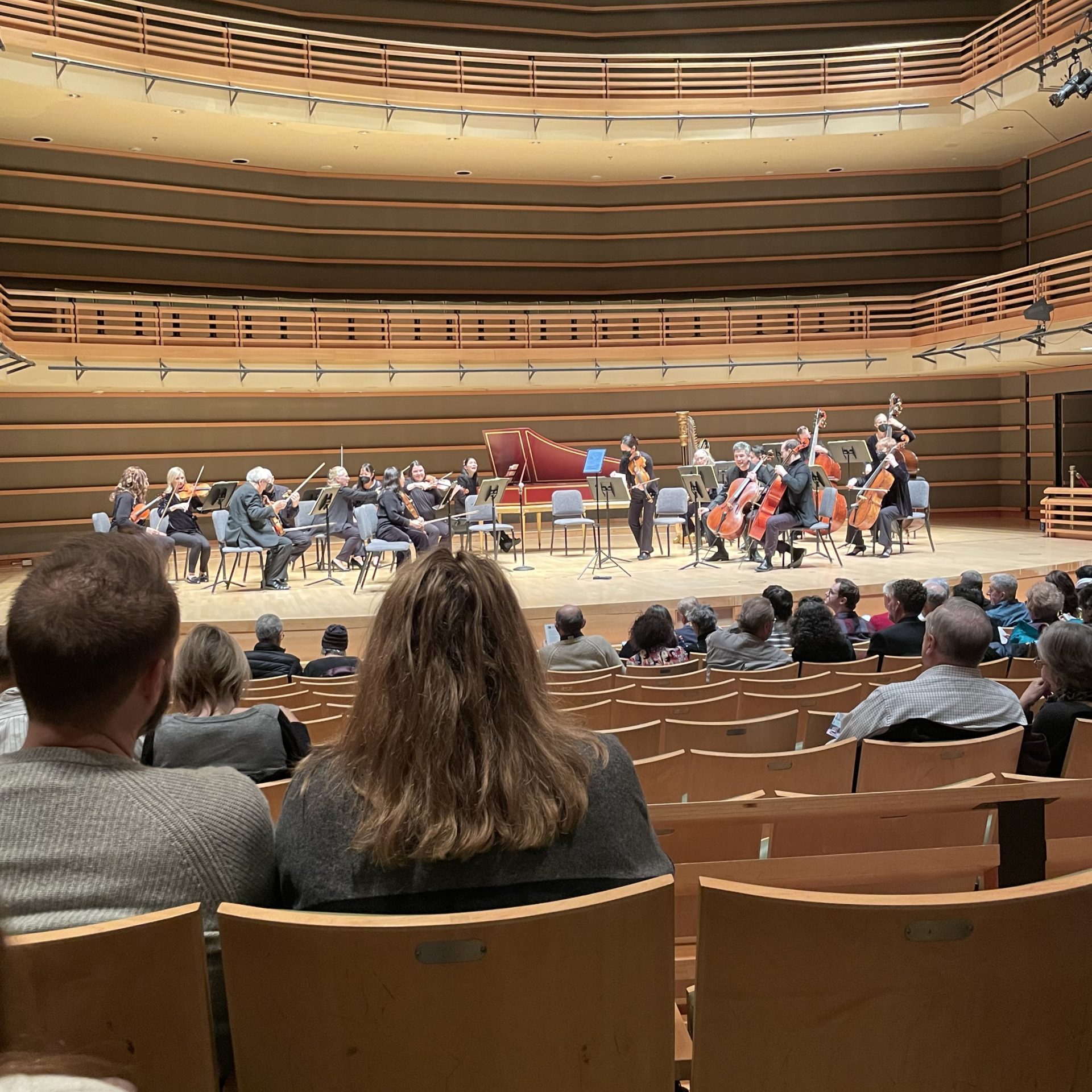The Chamber Orchestra of Philadelphia recently presented Vivaldi’s The Four Seasons paired with Max Richter’s revisionist imagining of the same work, The Four Seasons, Recomposed. I’d like to tell you a little bit about each work, the performance, and share my thoughts about how recomposing, as Richter has done with this piece, can be a creative path forward in Classical music.
 Antonio Vivaldi’s The Four Seasons is one of the most beloved pieces of classical music ever written. Composed in the early 1700s, it has stood the test of time, transcending generations and captivating audiences with its beautiful melodies, lush instrumentation, and forward-thinking techniques.
Antonio Vivaldi’s The Four Seasons is one of the most beloved pieces of classical music ever written. Composed in the early 1700s, it has stood the test of time, transcending generations and captivating audiences with its beautiful melodies, lush instrumentation, and forward-thinking techniques.
The piece is made up of four individual concertos, each with its own unique character. The first concerto, “Spring,” is an upbeat, joyful depiction of the vitality that comes with spring. The strings here are bright, light, and energetic. The second concerto, “Summer,” takes on a darker town and slower pace as it depicts a thunderous summer storm before the third, “Autumn,” transitions to a romantic, melancholic, melodious approach to the turning of leaves and cooling of the season. Finally, “Winter,” the fourth and final concerto of this work, offers us a conflicting view of winter; first, the brutal and stinging cold, followed by the warmth and respite of a warm fire, and then finally returning to the anxious energy of blowing cold to close out the work.
Max Richter is a German-English composer, producer, and pianist. He is renowned for his modern classical works, which have found homes in concert houses and film scores. His Four Seasons Recomposed is a genuinely incredible work that reimagines Vivaldi’s beloved classic in an exciting and innovative new way. By utilizing minimalism, post-rock, and electronica elements, Richter captures the original’s spirit while adding his unique touch. The four concerti from the original are broken out into their three sub-sections (generally Fast-Slow-Fast, a common classical form). Some movements remain relatively similar and recognizable, while others are distant and fully reimagined. By tweaking melodies, changing harmonies, and adding a film score sentimentality, he creates a profoundly immersive listening experience.
Both live and in recordings, Four Seasons Recomposed is a must-listen for all music fans, classical or not – as evidenced by the 80 million streams for Spring I on Spotify alone. Richter’s skillful reimagining of this classic work breathes new life into it. It shows off his masterful understanding of the genre.
The Chamber Orchestra of Philadelphia took this already enigmatic and captivating work to new heights with a returning favorite soloist, violinist Francisco Fullana. This was my first time seeing him in concert. Within a few movements of the Vivaldi, he secured a spot as one of my Top 5 concert soloists ever. His unbridled energy and love for music shone through. He clearly viewed the audience as a collaborator in this musical experience, inviting us in with musicological anecdotes, winks and nudges our direction throughout his playing, and a vitality that is rare to see on stage. It feels almost reductive to call him a soloist – he was a dancer, an actor, a professor, and a musician all at once. The orchestra responded to this energy in spades. I can honestly say that you don’t often see that much passion and joy onstage.
I left this concert with a specific thought, though. What if we approached more historical works with the same ideas Richter took toward Vivaldi’s Four Seasons? Much overdue, we are researching, performing, and celebrating the works of living and long-dead composers – current examples in Philadelphia include the Philadelphia Orchestra’s performance of works by Florence Price and William Dawson, and Opera Philadelphia’s upcoming performance of Margaret Bonds’ Credo. For many Black artists (and female and so many other disenfranchised identity groups), their careers and legacies were sublimated because of their identity.. Simultaneously, to create the necessary space for these works and artists, we are re-evaluating the classical canon (meaning the music we historically re-perform and teach through generations).
I wonder what concerts across musical disciplines could look like if we took the works of problematic composers and deconstructed them through the lenses of those they oppressed. What if a Jewish composer took to Wagner and broke down his anti-semitism with klezmer music?* What if female composers took to the operatic greats** and tore down their historic misogyny, reimagining these great operas through a feminist lens?
This conversation likely wasn’t the objective of the Chamber Orchestra’s concert, but what is art if not an opportunity to spark conversation? I applaud the Chamber Orchestra of Philadelphia on an incredible performance. I encourage you to listen to both of these works and start to wonder: how do we, as musicians and music lovers, embrace the treasures of the past while moving forward to a more equitable and emancipatory future?
*Klezmer music is an instrumental musical tradition of the Ashkenazi Jews of Central and Eastern Europe.
**For example, Sardou was the author of the play that became Puccini’s Tosca, one of the most famous of all operas. Sardou is often quoted as saying the key to success with operatic audiences was to “torture the woman.”








